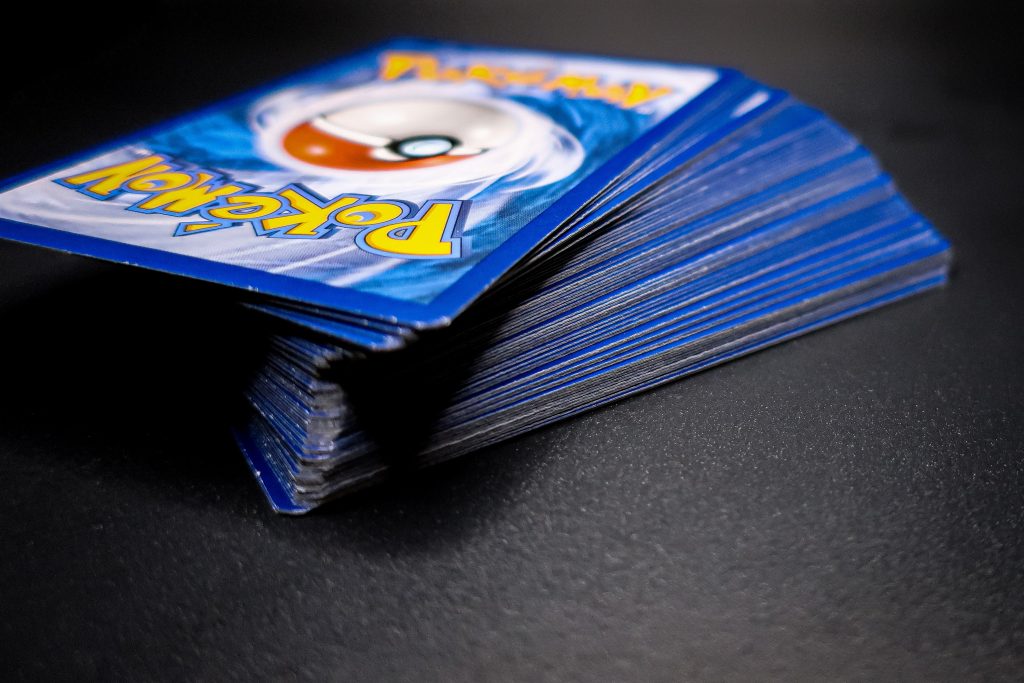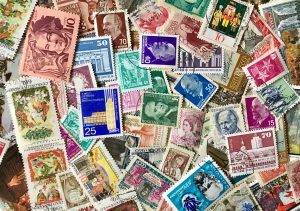Table of Contents:
Trading cards have been a part of childhood for decades. They go back as far as the 1860s when the cards were offered as a “prize” with packs of cigarettes. Since then, kids and adults alike have enjoyed collecting and, as the name suggests, trading these cards, from baseball and football to Pokémon, D&D, Magic, and many others.
Knowing which cards have value isn’t too hard. Certain factors can make cards more valuable, including their age, scarceness, sentimental value, and so forth.
Understanding how to assess the worth of your trading card collection is important, especially if you wish to sell it. The following tips and tricks will help you determine the value of your cards to a reasonable degree. It will also provide tips on storing them correctly, all brought to you by the storage experts at NSA Storage!
Which Trading Cards have the Most Value?
Different categories of trading cards can hold more value than others. Below are some of the most common types of valuable cards:
Pokémon Cards
- Holofoil and rare cards from early sets (e.g. Base Set, Jungle, Fossil) are usually the most sought after Pokémon cards.
- First-edition cards and promotional cards are more valuable, especially if they’re in mint condition.
Sports Cards
- Classic sports cards featuring outstanding athletes like Michael Jordan, Joe Montana, Willie Mays, or Babe Ruth can be very valuable. That’s especially true if they’re rookie cards or from memorable moments in the player’s career.
- Limited-edition cards or those that feature autographs are typically more valuable than other cards.
Entertainment Cards
- Magic the Gathering cards have a long history of popularity. Early edition cards like Black Lotus being highly sought after, making them more valuable
- D&D spell cards can demand a good price, especially collectible sets tied to events or expansions.
- Cards from TV shows or movies that hold cult status can significantly increase in value. That value can go even higher if they’re part of a limited run or a promotional release.
Odd or Interesting Trading Cards
- Cards like Wacky Packages or Garbage Pail Kids Can be quite valuable. That’s especially true if you have some of the classic cards from the 1970s and 80s.
- Most of the value in cards like these is sentimental as they aren’t based on a specific person or event. Still, an original set of Wacky Packages from the late 1960s through early 1970s can go for thousands of dollars.
How to Determine a Trading Card’s Value
Figuring out the value of your trading cards is the key to selling them, insuring them, or both. Here are some steps you can take to determine a card’s value.
Determine Your Card’s Rarity and Condition
Rarity is one of the biggest factors in determining value. Cards from older or limited-edition sets are harder to find, which increases their worth. You can usually check a card’s rarity by looking at its symbol. This is usually located at the bottom of the card in sets like Pokémon or Magic the Gathering.
Condition plays a major role in the value of a trading card, or collection of them. Grading services, such as CGC or PSA, can provide an official score if needed. Trading cards in mint or near-mint condition almost always hold more value. On the other hand, damaged or heavily played cards will significantly drop in value and price.
Using Websites or Apps to Determine a Trading Card’s Value
Collectr is a popular app that allows collectors to track and value their trading card collections. It connects to different marketplaces and provides up-to-date value estimates based on the input you provide.
Websites like eBay or TCGPlayer can be used to check recent sale prices on trading cards. Search for your specific card and use their “filters” to find the most recent completed sales.
Use Trading Card Grading Services to Find the Value
If you believe your particular card (or cards) is worth a lot, consider sending it to a professional grading service like CGC or PSA. These services evaluate a card’s condition and provide a score that can significantly increase its value on the secondary market.
Storing Trading Cards to Maintain Their Value
Proper storage is crucial to preserving the value of your trading cards. If it’s not done right, faded, moldy, or even chewed up cards can be the result! Follow the tips below to ensure your collection stays in pristine condition when stored.
- Store trading cards in toploaders or hard cases. They offer more protection than sleeves and are great for shipping cards or for long-term storage.
- Organize your trading cards in binders with sleeves. These thin plastic covers protect your cards from scratches, dust, and wear and tear. For cards with a much higher value, opt for premium sleeves or double-sleeving. Look for acid-free and PVC-free binders to prevent long-term damage to your cards. Lastly, avoid overstuffing your binder as it can warp or damage your cards
- Keep your trading cards in a cool, dry place. Humidity and heat can damage trading cards. Avoid areas with direct sunlight or fluctuating temperatures like basements or attics.
- Avoid handling rare trading cards. Use gloves when managing highly valuable cards, especially if you plan on selling or grading them.
Store Your Trading Cards with NSA Storage
No matter the type of trading cards you collect, understanding their value requires a competent grasp of rarity, condition, and demand. Using tools like Collectr and online platforms like eBay to check card prices is a very smart idea.
It’s also a great idea to invest in proper storage to maintain your trading card collection’s value for years to come. That’s where NSA Storage can help. Our storage facilities, located around the United States, are perfect for storing trading card collections. Many locations offer climate control features to keep your card in perfect condition.
Safe, clean, and secure, your trading cards and other valuables will be in good hands with NSA Storage. Reserve a storage unit online today and it will be ready and waiting when you arrive. Until then, best of luck valuing your trading card collection!





